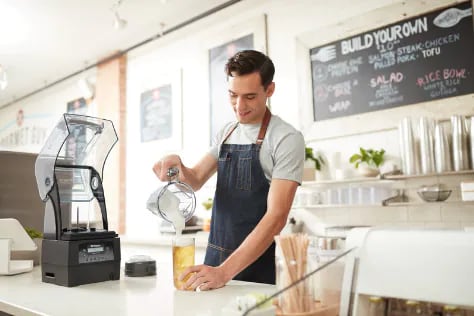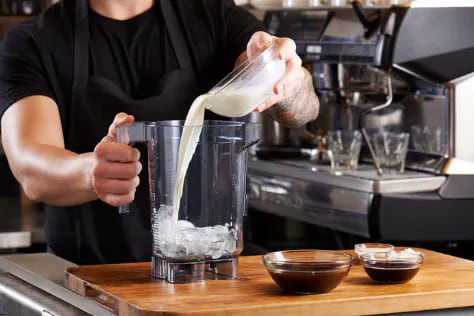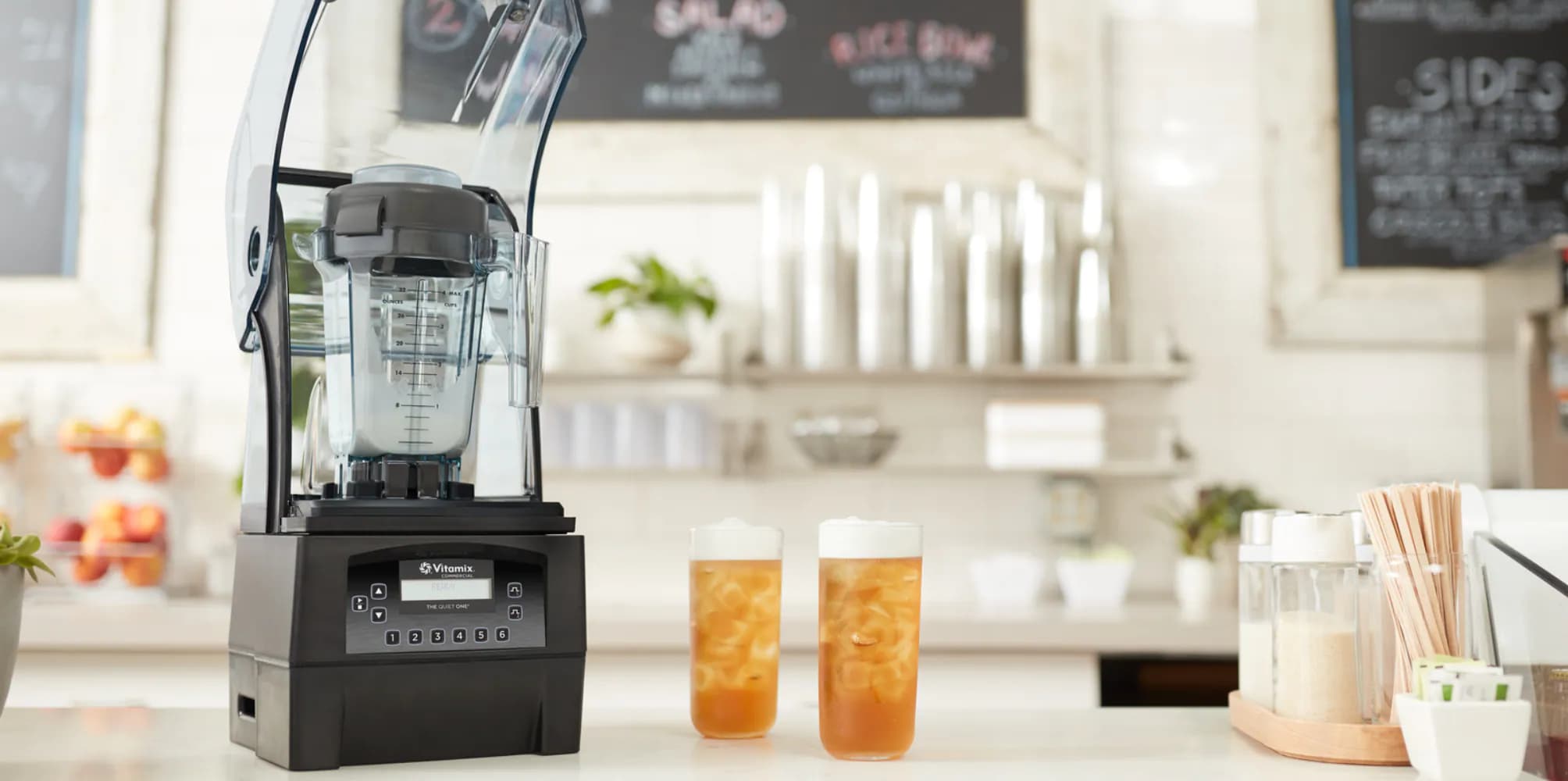While Americans continue to enjoy their smoothies and specialty coffee drinks, there is another beverage category that is extremely popular in Asia, far surpassing any other recreational beverage. Dressed up with ice, fruit or milk, premium tea drinks have been gaining favor with the younger generations over the past two decades. They have become a symbol of the young, urban middle class in China that craves new experiences and has money to spend.
If tea drinks are so popular in China, could they become popular in the U.S.? Americans have an affinity for coffee over tea. But that could change ― and there are signs of the tea-drinking influence already happening. Starbuck’s is now offering cold matcha tea and fruit drinks, and many independent cafes are serving shaken, iced milk teas made with chai, Thai, and green teas.
It helps that the younger generations in the United States – Millennials and Gen Z – are open to new flavors and combinations of flavors. Also, tea, which was originally consumed for medicinal purposes, aligns very well with the trend toward functional foods. Modern studies suggest a range of health benefits associated with white, black, green, and oolong tea.
So, there are definite possibilities for enterprising North American restaurateurs who may be interested in importing some of the tea-based trends and innovations from China and Taiwan. Let’s take a closer look at what makes cold tea drinks so alluring to young Chinese men and women.
Boba or Bubble Tea
Boba or bubble tea, with its hallmark tapioca pearls, is a relatively known entity for Western audiences, and available in many major metropolitan markets in North America through chain stores, like Kung Fu Tea, Tiger Sugar and Fat Straws, as well as through small, independent cafes. And the global market for boba tea continues to grow. It was estimated at $2.4 billion in 2019, and it is forecast to nearly double by 2027.
Boba tea is an excellent point of entry for Western markets because it is so readily appealing. In its classic form, boba tea is made with premium black tea shaken with milk and ice, then enriched with caramel- or brown sugar-flavored tapioca pearls about the size of small marbles. Today, it is available in many varieties of tea (e.g., oolong, green, black, Thai), some of which may be unfamiliar to people in North America. In general, though, boba tea is not a huge leap for the Western palate. It is, after all, a sweet cold, drink with tapioca pearls, bits of fruit or jellied squares, although it is available in low-sugar options.

Milk and Fruit Tea
Except for the tapioca pearls, boba tea is not really a distinct category different from the many other varieties of cold tea drinks that are popular throughout China. These tea drinks consist of two main varieties: milk teas and fruit teas. Both consist of freshly brewed tea – green, black, yellow, white, dark, oolong, or floral – but while the one is mixed with milk, the other is mixed with fruit. By blending in other flavors, like mango, coconut, melon, lemon, grapefruit, taro or cocoa, tea shops are able to create a vast number of menu items, with bright colors and degrees of transparency.
An optional element that adds a great deal of interest to tea drinks in China is the milk cap (also called a snow cap or cheese topping), which is an opaque, white foam about an inch or more in thickness that sits on top of the drink and slowly filters its way down through the tea as you drink it. It is made in different ways at different shops, and may yield a cheesy, salty, or creamy flavor. In many cases, it is actually made with a powdered cheese or milk that is whipped into a thick foam. Vitamix’s The Quiet One®, paired with the Aerating Container, is a favorite tool for whipping and blending milk caps.

Zero Calories, Zero Sugar
Asian tea drinks do not have to be dressed up with tapioca pearls, cheese caps, or other high caloric elements. The Millennial and Gen Z generations in China, like their American counterparts, are health-conscious, with many looking for beverages that don’t add calories or sugar. Fresh fruit teas hit the mark, in this regard, and deliver on the health benefits of traditional tea. Like smoothies in the U.S., Asian tea drinks come in a range of options, from very healthy to a decadent treat.
The Vast Appeal of Cold Tea Drinks
It is hard to overstate the magnitude of the tea drink trend in China. HEYTEA, one of the larger tea chains in China with 695 stores, has gotten a lot of Western press, not only for popularizing “cheese tea,” but also for its chic, minimalist store experience and effective branding. But there are dozens of other tea chains that are as large or larger, including Yi Dian Dian, Coco, Happy Lemon, LeLeCha, Mixue Ice Cream & Tea, and The Alley. These franchises extend beyond China, Hong Kong and Taiwan to Singapore, Thailand, and the Philippines. In China alone, there are about 500,000 tea drink shops, many of them being smaller brands or independent shops. Large brands, like HEYTEA, have been successful in positioning tea drinks as an upscale lifestyle choice, appealing especially to younger audiences. People 21-30 years old constitute the largest share of the pie (50%), followed by the 21- to 40-year-olds (37%), according to daxueconsulting. Women in large cities are the largest group among these age categories.
Coffee vs. Tea – Maybe Not that Different After All
The success of premium tea drinks in China can be attributed to many variables, including a young, urban class with disposable income; clever marketing; and the instagrammable appeal of bubble tea. But another factor is that China is a tea-drinking culture – and it’s been that way for thousands of years. The same is not true in the U.S., and marketers will have to work extra hard to bring Americans around to the unique flavors of Asian tea drinks. However, it would not be that different from what Starbucks did in China, warming up the Chinese populace to the allure of coffee drinking. Cleverly, the coffee chain built a bridge between the tea and coffee cultures by offering both types of drinks on its menu. Now, Starbucks has 5,000 stores in China, and the appeal of coffee is still growing in Asia. Similarly, Cocos, the bubble tea brand from Taiwan, already has 16 locations in New York and New Jersey. As these examples show, cultural crossover is not only possible, but fruitful, leading to changes in perception and behavior, as well as inspiration for new menu items and combinations of flavors.
The Vitamix Culinary Team consults with restaurants and chains on recipe and menu development, as well as blending equipment, kitchen efficiency, and food and beverage quality. Contact Stephen Hosey SHosey@Vitamix.com.
